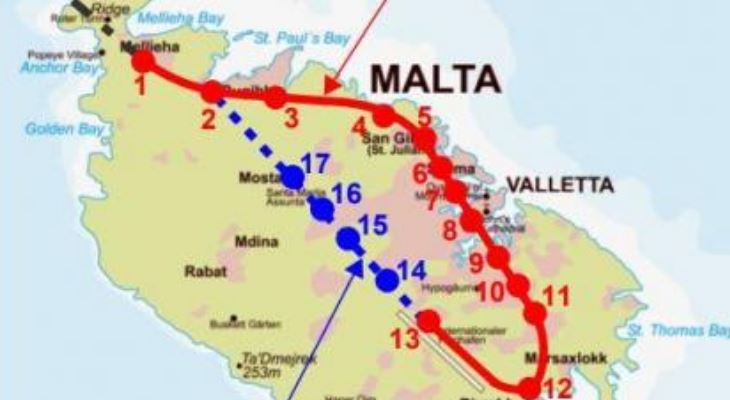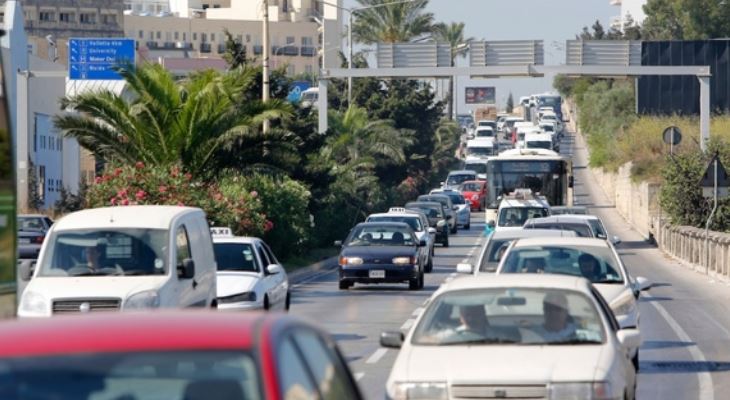From Valletta to Gozo in 30 minutes: Can the latest metro proposal solve our traffic woes?
We look at just one of the ideas that’s stirring debate.
It’s estimated to cost as much as four billion Euro and promises to have its first phase completed in five years. The latest proposed metro system for Malta and Gozo claims it will reduce our time spent stuck in traffic, give us cleaner air and turn a handy profit. That sounds perfect! But of course, nothing is that straightforward...

KonceptX Limited
Breaking things down
Phase One: A 25-kilometre metro line, linking Mellieħa to Birżebbuġa, with a loop at the end to the airport, with stops including the University of Malta and Mater Dei Hospital.
Phase Two: A 10-kilometre line connecting St Paul’s Bay to the airport and serving busy hubs such as Qormi and Birkirkara.
Phase Three: A 15-kilometre line linking Mellieħa and Gozo which would take in Xewkija, Rabat and Marsalforn.
The man behind this metro mission is architect and structural engineer Konrad Xuereb. He’s the Director at KonceptX - a company with offices in both Malta and London – and believes his plan will unclog the country’s infrastructure arteries.

Dr Konrad Xuereb / LinkedIn
Speaking to the Times of Malta, Dr Xuereb says, “To put things into perspective, construction work on the 118-kilometre-long Crossrail underground metro in London - more than double the length of that proposed for Malta - started in mid-2009 and is planned to open later this year.”
But, understandably, many are skeptical. The island’s political parties have been proposing similar ideas for 25 years and things have always stalled. One concern people have is what to do with the estimated four million cubic metres of rubble that will be dug up while constructing the 20 new metro stations.
But Dr Xuereb has a solution – again using London as an example: “In the Crossrail Underground Line, over three million tonness of earth from tunnel excavation were used to create a new nature conservation area at Wallasea Island on the River Thames Estuary, transforming it into a thriving wetland teeming with bird and marine life. Subject to detailed environmental studies, most of the inert waste from the construction of the proposed Malta metro could be strategically used for land reclamation to form an offshore nature reserve or an offshore wind farm. An offshore wind farm could also be complemented by an offshore solar farm, with the solar panels connected to the national grid.”
To the people who have concerns about the damage the construction could do to precious archaeological sites, Dr Xuereb also has an answer: “The Malta metro tunnel would predominantly be located at a depth of approximately 25 metres below ground level, dipping gently under the channel. This would ensure that the construction of the tunnel would not disturb the superficial soils and top geological strata, where any yet undiscovered archaeological remains may be lying. Notwithstanding this, detailed environmental and archaeological studies would be required before the final metro route and station locations could be fixed.”

Malta's congested roads / Research Trust Malta
And what about the cost? It’s estimated that the metro system would take around four billion Euro to complete – four times more than the proposed underground tunnel linking Malta and Gozo. But Dr Xuereb thinks the cost would be made back from fares from locals and tourists, as well as the advertising and retail space sold at stations. He also believes the overall health benefits of fewer cars polluting the air would cut down on medical bills.
But will the locals take to the system?
But will people opt for a tram system over getting behind the wheel? After all, the most recent figures from the EU show that Malta has the third highest ratio of cars to people in Europe – with 45 new vehicles adding to the blockages every day.
The Transport and Infrastructure Minister has been accepting official proposals to end traffic congestion for months now. Once decided, the plans will be made available to the public.
Dr Xuereb believes action needs to come soon. “There is a strong need for Malta to address the public transport system holistically with a permanent connection to Gozo forming part of such a system. An underground metro will turn the nation’s current transport challenges into an opportunity.”
What do you think?